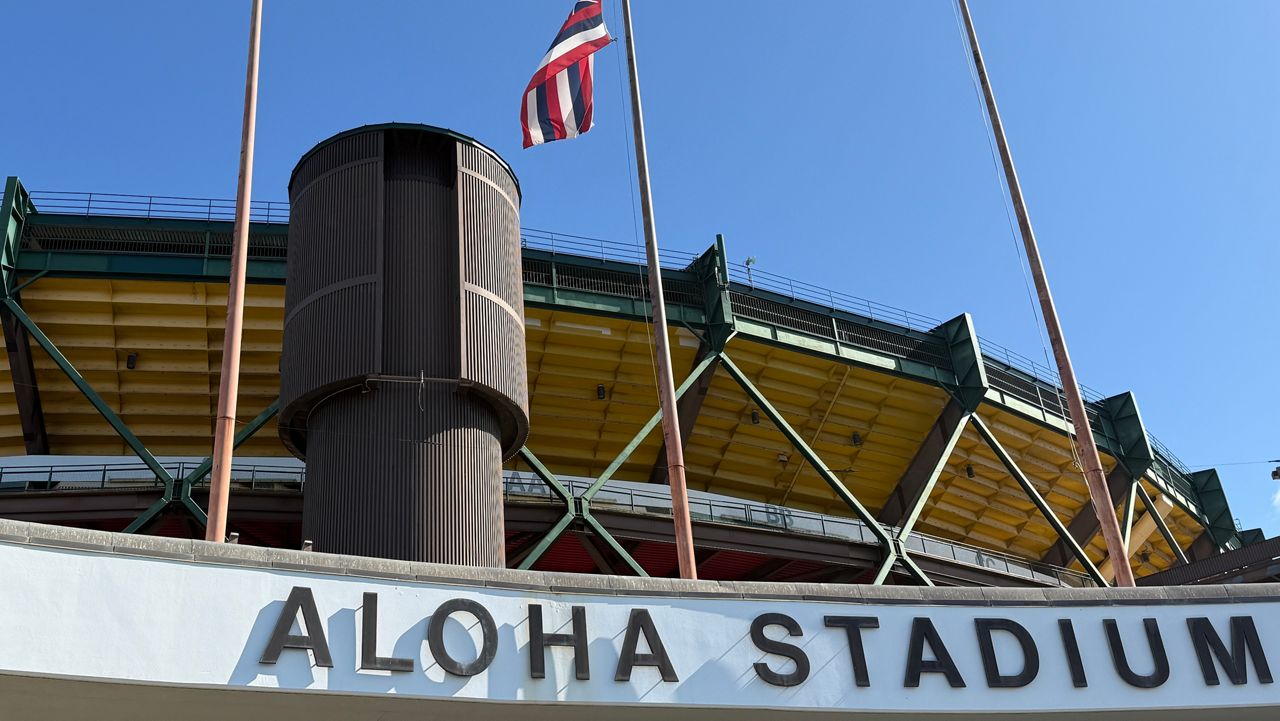AIEA, Hawaii — The stadium project in Halawa may miss a key upcoming deadline for execution of a full contract with its development team, state officials said Thursday.
The New Aloha Stadium Entertainment District project’s self-imposed June 30 target for full agreement with Aloha Halawa District Partners has been in place since the project was rebooted by Gov. Josh Green in 2023. Stadium manager Chris Sadayasu, speaking at Thursday’s Stadium Authority board meeting inside old Aloha Stadium, said a full agreement “might slip” into July.
However, Stadium Authority chair Brennon Morioka told Spectrum News that should the contract lag June 30, the planned venue’s overall timetable, including demolition of existing Aloha Stadium, remains on track.
“We’re pretty optimistic that we might be able to hit that June 30 date,” Morioka said. “If slipping into a little bit of July means we get a really good, solid contract, then that’s what we’re going to do.”
Officials have targeted a fall 2028 opening in time for that year’s University of Hawaii football season. Meanwhile, the demolition process — a piece-by-piece dismantling of the 50-year-old steel frame, not an implosion — is slated to begin in August and is projected to take 10 months through early summer 2026.
The state’s “preferred offeror” AHDP, headed up by Stanford Carr of Stanford Carr Development, remains firmly on board, Morioka said.
The full contract agreement has four main parts: a master development agreement for the whole 98-acre, mixed-use site; a development/operations agreement for the stadium itself; a lease; and a reciprocal and shared infrastructure agreement.
The first two items have made for the most involved discussion between NASED and AHDP officials, Sadayasu told Spectrum News. The parties have met multiple times a week for the last several months.
“Both the Master Development Agreement and Stadium Development and Operation Agreement are taking a while because of the detailed nature of the agreements,” Sadayasu said in a message. “Both contain provisions applicable to both agreements, so once we come to an agreement, we should be able to execute both at that time.”
The envisioned stadium’s features have been steadily scaled back over time as costs have climbed well beyond the state’s $350 million allotment. A long-rumored third-party donor has yet to present itself.
Contrary to speculation that 20,000 is the latest projected seating capacity before a theoretical future expansion, Morioka said 25,000 is still the entry-level objective.
“While we're still contracting to the base stadium, because that's what's in the RFP (Request For Proposal), we are … planning for the bigger, better, aspirational stadium,” Morioka said, “because we do think that we're going to be getting some form of external monies coming in at some point, which is why Stanford has adopted that phased approach, where he'll build the stadium and anything further is additive.”
The demolition process will cost about $20 million, Morioka said, replacing a $9 million “placeholder” figure. Morioka credited the City and County of Honolulu’s Department of Planning and Permitting for keeping things on schedule on its end.
An implosion demolition was discounted in part because jurisdiction of what permits to seek and from whom was unclear, he said. The Department of Health and the military might’ve been involved in that process.
Morioka said the tenor of recent meetings with AHDP have been “very professional and collaborative.”
“It hasn't been ‘I'm just going to protect my marbles,’” he said. “It’s how can we compromise for the best end product.”
The Stadium Authority has grappled with the Legislature’s denial of access to $49.5 million in previously approved special project funding. The board is hopeful that a special session will be called later this year; otherwise, it will have to cover some stadium planning and operational costs from its existing budget until the 2026 session.
The board's next monthly meeting is June 26.
Brian McInnis covers the state's sports scene for Spectrum News Hawaii. He can be reached at brian.mcinnis@charter.com.




